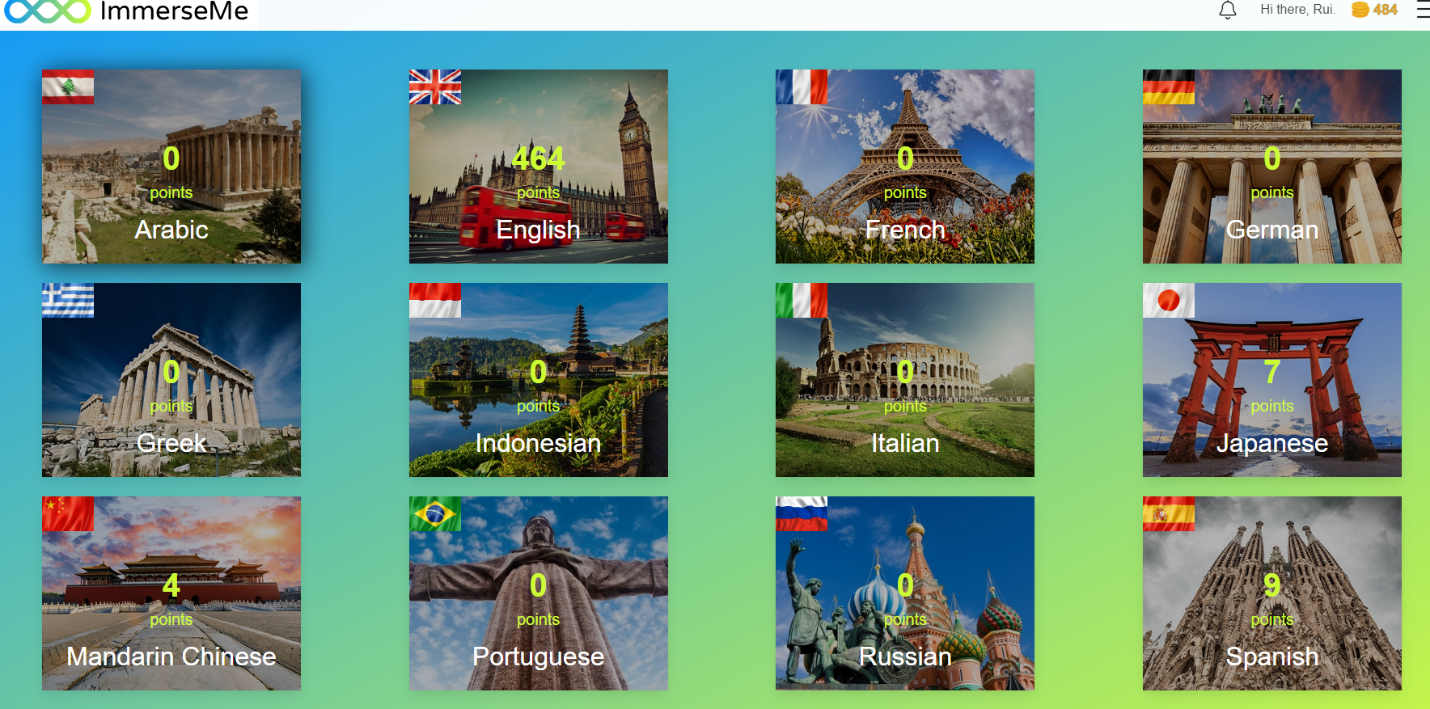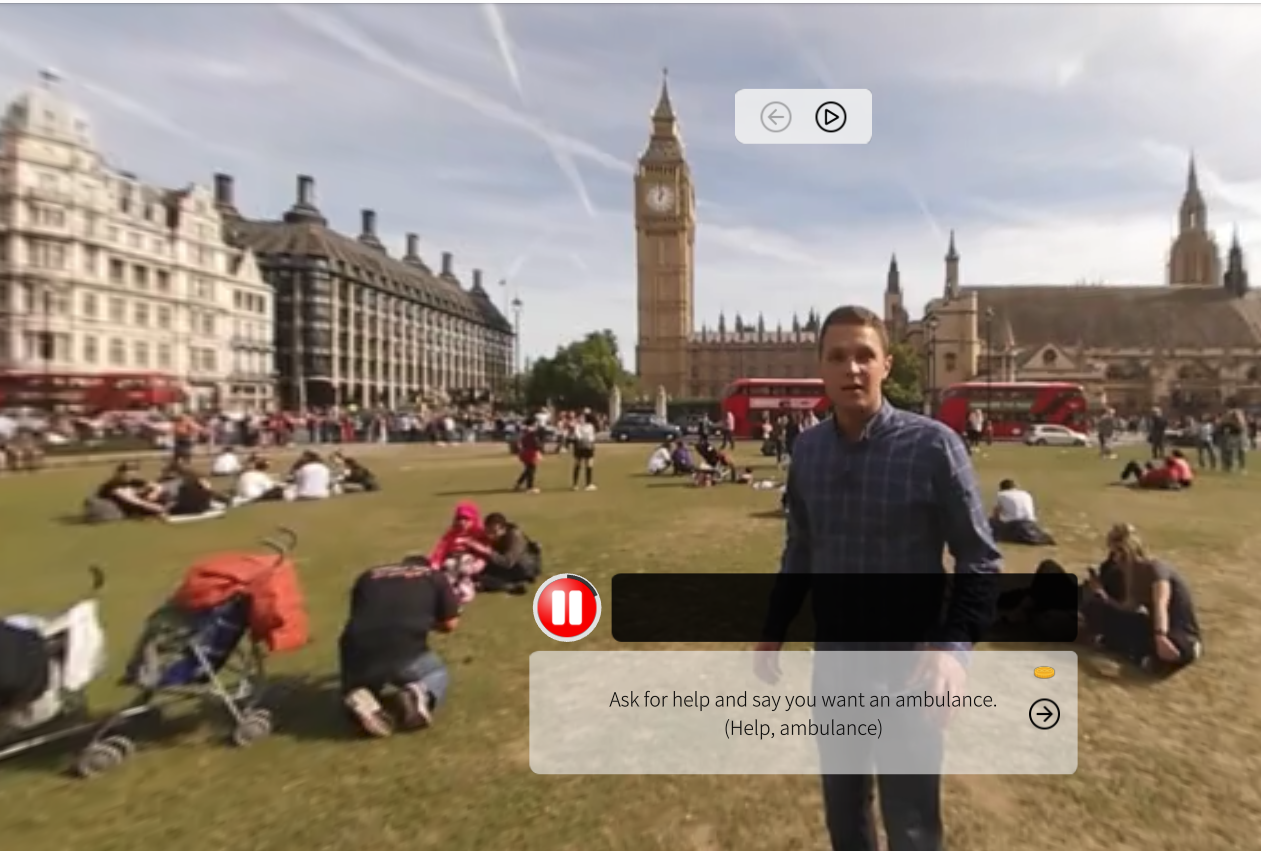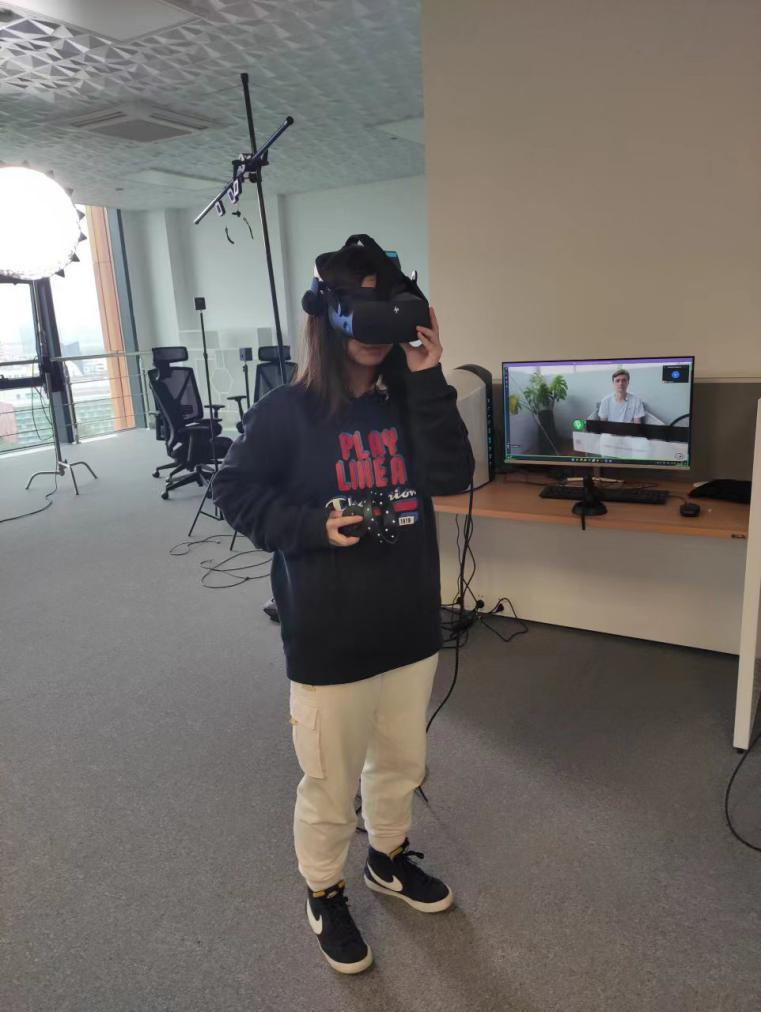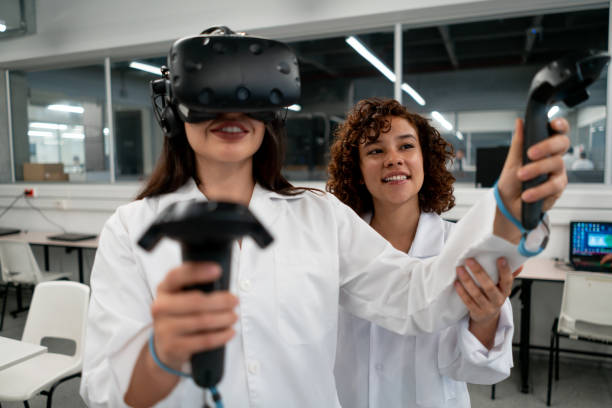About the Authors: Mengqi Hu is an EAP (English for Academic Purpose) Language Lecturer in the School of Languages (SoL), English Language Centre, at Xi’an Jiaotong Liverpool University (XJTLU). She received her Master of Arts in Translation Studies from the University of Durham. Her research interests are technology-enhanced teaching and learning and student engagement.
Rui Xu is an EAP tutor and the manager of the VR Language Learning Lab at the School of Languages. The VR Language Learning Lab is a community of educators and students passionate about enabling, enhancing, and enriching the experience of language learning by exploring innovative uses of extended reality (XR) technologies.
Dr. Airong Wang is an EAP Language Lecturer. She has been teaching university-level English courses for 15 years. She obtained Doctor of Philosophy in English from Mid-Sweden University. Her research interest lies in Computer-Assisted Language Learning and Teaching, particularly English courses in virtual environments.
Keywords: VR technology, immersive environment, speaking practices
Introduction
As the use of technology prevails, language learning in virtual learning environments has been receiving considerable attention, especially during the pandemic, when distance learning is unavoidable and technology-enhanced learning stretches from gamification to more pedagogical involvements. It is specifically the ability to deliver engaging and focused learning that makes Virtual Reality (VR) an effective tool for language educators. However, pedagogical concerns over VR tools’ effectiveness in education field are rising, such as the replacement of human instructors by virtual pedagogical agents, in virtual learning environments (Sinatra et al., 2021). Studies examining VR tools’ effectiveness indicate that gender, gesture and feedback that are essential in language learning can be achieved in VR environments as well (Sinatra et al., 2021).
During Academic Year 2022 semester 1, at the Continuing Support (CS) workshops of School of Languages, Mengqi Hu and Rui Xu intended to take the research-led teaching approach, like VR tool called Immerse Me (Figure 1) to evaluate the impacts of the presence and social fidelity of virtual agents on students’ speaking experience in contextual immersion environment. It is a tool for people to practice and improve on language fluency and accuracy in real-life scenarios, while removing classroom walls and connecting with the outside world.

Figure 1. Immerse Me webpage layout
Research-led Teaching
These speaking practice workshops are based upon a Teaching Development Fund (TDF) project, which is part of the university's strategy to build a technology-enhanced learning. The virtual human fidelity to social interaction in virtual environments has been identified as an essential factor in improving the quality of social interaction (Garau, 2003). Sinatre et al. (2021) also demonstrated that even though social components of fidelity have been frequently discussed, the social fidelity of virtual agents in learning effectiveness remains a gap, which drives further investigation into students’ presence in immersive real-life scenarios in this project.
Currently, there are three kinds of VR tools in the market based on different original design purposes: open social virtuality, massively multiplayer online games and synthetic immersive environments (SIEs) (Lin and Lan, 2015). Immersive Me belongs to SIEs, which is also the only category designed with an emphasis on educational objectives by carefully incorporating pedagogy into immersive spaces (Lin and Lan, 2015). It offers virtual field trips as authentic scenarios for students to practice English conversations (Figure 2). Other factors such as different levels of interaction with virtual agents should be researched, so that the influence of virtual field trips on the presence and perceived learning can be enhanced (Han, 2020). Another feature, as shown in figure 2, contextual immersion is identified in this platform, which can fill the gap between general textbook-based dialogues and field trip conversation in real life.

Figure 2. Contextual Immersion Feature
VR Speaking Experiment
All together around 60 students participated in these CS speaking practice workshops, among whom many choose to apply for overseas study. Therefore, the motivation of enhancing their speaking proficiency of foreign language is quite high. However, speaking and understanding other speakers in local scenarios tend to be challenging for students. Even though SoL is a diversified intercultural community, not many students utilize their opportunities to interact with each other in English dialogue, for the reasons of shyness and lack of confidence.
Before the workshop, in order to familiarize participants with VR head-mounted device and Immerse Me platform, prior to the hands-on practice, we prepared an 8-minute presentation on how to navigate through the Immerse Me platform to choose the level and topic, check key grammar and vocabulary, and set up VR mode for practice. During the set-up practice, some students with glasses may find it a little bit uncomfortable to wear the VR head-mounted devices and glasses at the same time. This is one of the typical difficulties of using VR head-mounted devices. Eventually they decided to wear contact lenses for the latter attempts. During the speaking practices, students can manage the whole practice on their own with some feedback automatically generated through the Immerse Me platform (Figure 3). They also commented on the word caption function, which allows them to see their pronounced words to easily note the wrong spells that could be resulted from their mispronunciation.

Figure 3. Student Practice in VR Lab
Feedback and Implications
SoL Modern Language Centre currently offers Mandarin, Spanish and Japanese to thousands of students. This VR experiment and Immerse Me platform could potentially be applied across all the language programmes for both students and faculty. Although some constraints such as the limit of device and venue space, participants’ digital literacy level, dizziness and discomfort after a long time of wearing a VR head-mounted device exist, the application of VR significantly boosts learner confidence and motivation based on previous investigation and students’ feedback. It is still worthwhile to embedding VR application with the study programme to overcome the distance and time limits.
References:
Garau, M. (2003) ‘The impact of avatar fidelity on social interaction in virtual environments’. Doctor Dissertation. University of London. Available at http://teilab-static.arch.tamu.edu/quek/Classes/Aware+EmbodiedInteraction/EmbodiedInteractionPAPERS/Gar03.pdf (Accessed: 2nd December 2022).
Han, I. (2020) ‘Immersive virtual field trips in education: a mixed-methods study on elementary students’ presence and perceived learning’, 52(2), pp.420-435. doi: 10.1111/bjet.12842
Lin, T.J. and Lan, Y.J. (2015) ‘Language learning in virtual reality environments: past, present, and future’, Educational Technology & Society, 18(4), 486-497.
Sinatra, A.M. et al. (2021) ‘Social fidelity in virtual agents: Impacts on presence and learning’, Computers in Human Behavior,114. Available at: https://doi.org/10.1016/j.chb.2020.106562 (Accessed: 2nd December 2022).
Kaplan-Rakowski, R. and Wojdynski, T. (2018). Students’ attitudes toward high-immersion virtual reality assisted language learning. In P. Taalas, P.T.Jalkanen, L. Bradley, & S. Thuesny, Future-proof CALL: language learning as exploration and encounters---short papers from Eurocall 2018 (124-129). Erocall.




